#Size Comparison/Model Cel
Explore tagged Tumblr posts
Text

Space Ghost Size Comparison/Model Cel (Hanna-Barbera, 1966)
#Space Ghost#Size Comparison/Model Cel#Hanna-Barbera#tv#cartoon#animation#art#vintage#1966#jace#jan#blip
21 notes
·
View notes
Text
Final Group Designs “Spider-Man & His Amazing Friends” (1981)

#80s#marvel productions#nbc#saturday mornings#spiderman#firestar#iceman#aunt may#ms lion#bobby drake#angelica jones#peter parker#character designs#animation art#size comparison#model cel
23 notes
·
View notes
Text
Template Prompting
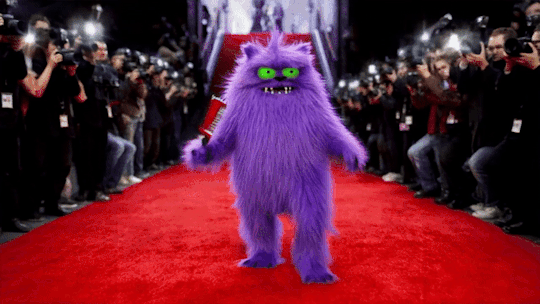
This post is mostly to show off gifs but will get wordy, enjoy this tune while you read.
Did the Academy award me this... award? No. Did the henchmen who have you at disintegrator-point? Yes. And isn't that what really matters?" - Dr. Underfang

One of the ongoing hurdles for any generative AI service is that prompting up something cool tends to take practice yet most people will get frustrated if their first few attempts don't bear at least promising fruit.
The answer: Several Sizes Fit Most
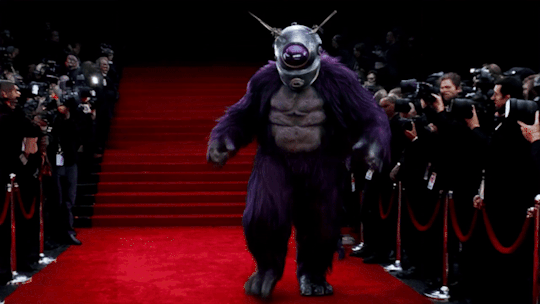
A lot of services, Vidu included, Do this via templates where most of the prompting is already done for you and you just add a few words or an image reference. A menu of these builds up over time as an easy "try out" feature.
I normally don't use those, but as part of Vidu's Creative Partner Program, they gave me about a music video's worth of credits to show their Oscar templates off (full disclosure) and so I'm here to opine.

Wally looks how I feel, like, all the time.
For this one, you just dropped in a pic and whatever it was either walked down the red carpet or accepted a reward in fancy duds. This is all straight-to-the-meme type stuff, but we can still learn some tricks from it.
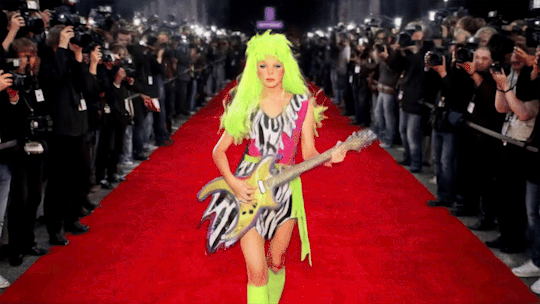
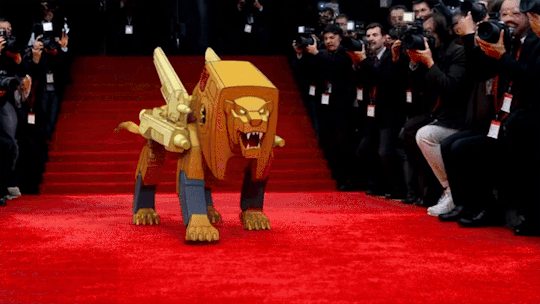
On the left is the result of using the painted Pizazz Jem & the Holograms character art, and on the right is the result of using the Transformer Steeljaw's animation model sheet.
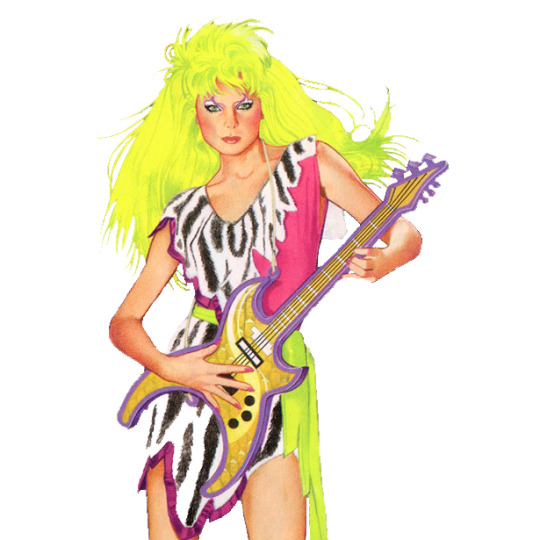

The more painted and shaded look of Pizazz gives the AI enough to interpret it as a real, albeit very vibrant, person and fills in the blanks accordingly.
Steeljaw, by comparison, is interpreted with all his animation-lines in place, and with the flat coloration, gets reinterpreted as a sort of half-toon or living pepekura creature. Which is an effect you can use by using obviously-illustrated reference with live action backgrounds or prompting.
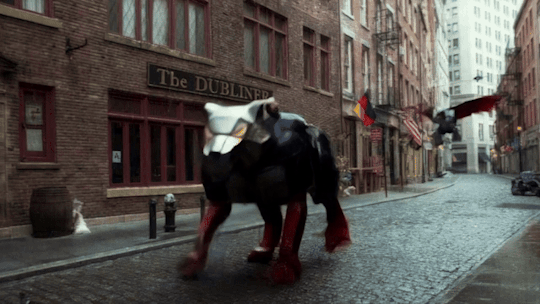
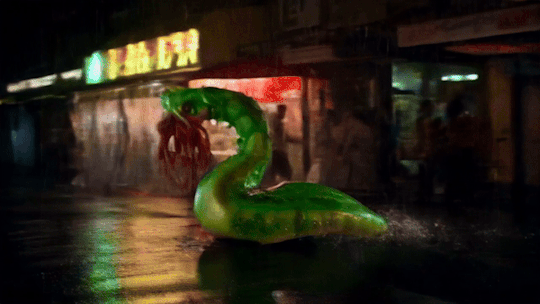
To produce a particularly unique, dreamlike effect.
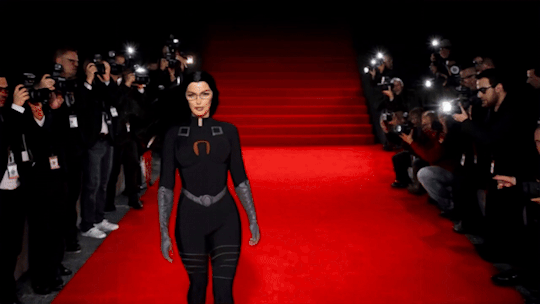
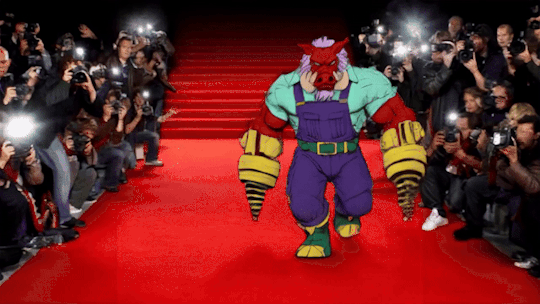
But it's not super-consistent across different types of designs. Both the Baroness and Full-Boar here were flat, animation model sheets with no shading. Baroness, however, is more of a person with makeup and costuming trying to make her look like a toon while Full-Boar is a fully cel-shaded toon composited into the scene.
You can control that process more if you're controlling all the prompting, but templates don't really let you do that. On the other hand, all my red carpet pics are first attempts, while the in-scene ones took multiple attempts and tweaks to the process.
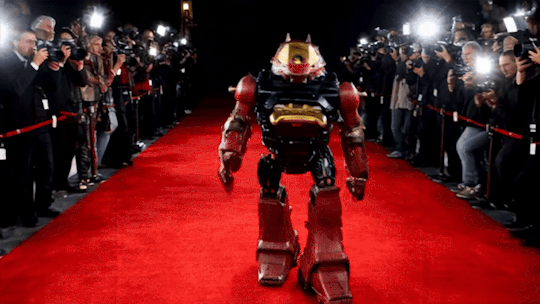
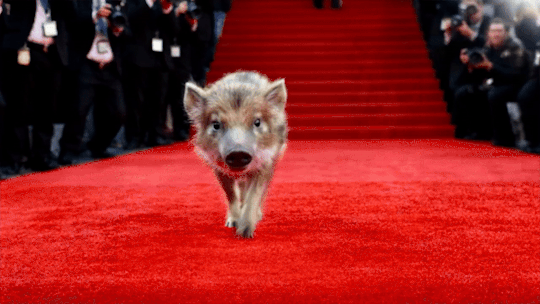
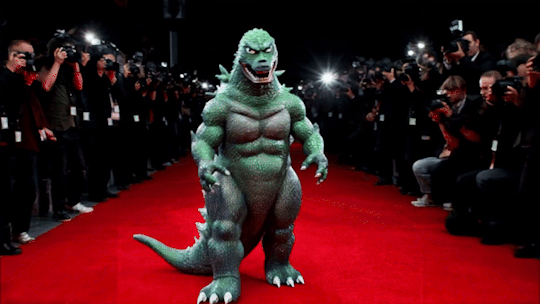
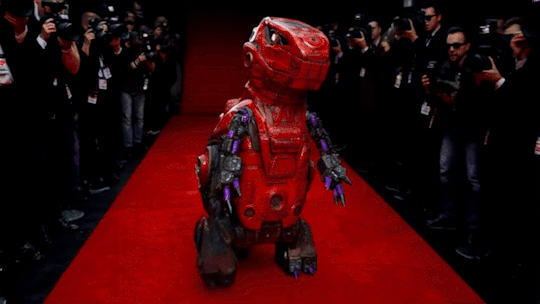
And it is surprisingly robust in what it can adapt to, even if Deadeye's doing the 'trying not to shit myself' walk because that toy's legs were purely decrative coverings for wheels, that's impressive.
Sense of scale is way off in hilarious ways, even if one assumes they're people in costumes they're like 2 feet tall.
Pop on over to Vidu if you want to, tell 'em DeepDreamNights sent you.
#vidu ai#vidu CCP#Oscars2025#ai video#ai tutorial#animated gif#not neutral#as I am in their Artist's program#ai art#ai assisted art#starriors#godzilla#the robot monster#tyrannomax#dr. underfang#G.I.Joe#the baroness#wally manmoth
10 notes
·
View notes
Text
University Project Idea + Research
Alright so my idea is a bit different to the other ones I had here. My idea for this project is to create multiple types of 3D models that people persue as a career path. My reasoning behind this is because in year 2 of my University course is where I have to specialise and I am given multiple options: Environments, Weapons (Guns), Vehicles (Cars), and Stylized Characters. I thought it would be a cool idea to explore all of these routes for my FMP to figure out which direction I would potentially like to go in as a 3D modeller. The main risk of persueing an idea like this is I believe is that its a lot of work to create such a variety of models and I dont want to nescessarily risk the quality of the models final outcome. Although it will be as I said providing me with the opportunity to better develop my 3D Model skills variety and knowledge.


------------------------------------------------------------------------------
Game, Shows, Movies and other media Examples
Environments:
For this section I thought of a few different games inlcuding God of War, Karting Superstars and The Legend of Zelda: Breath of the Wild which all boast 3 different art directions for game environments. God of War features very realistic 'viking-like' game environments while Zelda features a Cel Shaded Toon style of game but leaning slightly towards a more stylized appearance. Lastly Karting Superstars boasts a fully stylized appearance with warm and colourful environments. Here are the best screenshots I could find to showcase the environments:






Characters:
For this little section I took a quick look at some different characters in games which I think explored different approaches to their art style. The first character I looked at falls under the stylized art style with this being is Chase from Pokemon Lets Go Pikachu. Here were some of my main takeaways:

Next I looked at a more realisitc character design with this being Joel Miller from The Last Of Us 2. His character is one of the most detailed and realistic character models I have seen to date in any game. He features highly detailed textures and especially in the skin as you can see individual hair follicles.

Vehicles:
For this section I wanted to look at a couple more different art styles I could find for vehicles in games. The first game I looked at was Forza Horizon 5 which features the most realisitc graphics in any open world racing game to date so far. The car models are highly realisitc reacting to the world around them whether thats showing dirt, damage or just general real-time reflections of things around them.


The next game I looked at for a more 'retro' appearance is Victory Heat Rally. The cars in this game are all made of pixel art to create that 'retro' nostalgic appearance. They feature a variety of animations that all react accordingly to the players inputs.


Weapons:
Lastly I just wanted to look at a couple of examples of weapons. The first weapon I looked at is a Lightsaber which is a fictional energy based sword found in the Star Wars universe. They come in many shapes, sizes and colours which all represent different meanings in the Star Wars lore.

Lastly I had a look at a gun which goes by the name of Kenny. I really like this different approach that High On Life has to its weapons as theyre all living creatures which are there to provide comic relief along the way. The design follows a much more stylized route in comparison to the more realisitc lightsabers seen previously. Kenny has a snail-like form, he has blue skin with two red antennas on his head, he has a pink back that looks like a pangolin's scales and a hole in his other side which allows him to shoot his slime and Glob Shot.


------------------------------------------------------------------------------
Moodboard
Here I gathered a bunch of images to create a Moodboard for these different areas:

------------------------------------------------------------------------------
Sources:
0 notes
Photo


WHAAAAALLE DAD So if you saw my last post you probably know I’ve been messing with XNAlara/Xps and was woeful there was no Teba or Zora models for me to play with aside from Sidon and Mipha and that I’d asked for the good peoples who read it to help me find a model, Ahahahah...I just spent my whole bloody weekend wasting away downloading those Cemu files of botw, youtube video tutorials and forum reading, extracting model files and figuring shit out so I could have a whale dad on XPS when I’m already way behind on my writing. BUT I HAVE A WHALE DAD. The only problems I still have with him are his ropes which don’t show their detail in cel shaded mode and that his bone list is not organized nice and neat like everyone else, and I can’t mirror limbs either and I don’t know how to edit the bone list into organized categories ahaahah...;w; BUT I HAVE HIM I’LL FIGURE IT OUT SOME OTHER TIME ;w; (had to scale him up some tho, I THINK that’s about the right size? I was too lazy to pull out my switch and eyeball link in comparison to say, his legs. )
I’m gonna go die now, ahah...oh and if anyone feels like helping me with my bone problem, feel free to message me...(I will shoot myself in the foot if I see others post a model guy up like two days later if only for the fact that I didn’t have to expend all the time and effort fumbling my way through this mess. )
#tloz botw#sidon#king dorephan#mipha#link#WindyRen#Half-Scratch Scribbles#Where the frick is my cookie#this was hard D8#WHY DID I SPEND SO MUCH TIME WHEN I SHOULD BE WRITING DX WHY IS THIS PROGRAM SO MUCH FUN TO PLAY WITH
102 notes
·
View notes
Text
Nvidia RTX 3070 review: AMD’s stopwatch just started ticking a lot louder
Talking about the RTX 3070, Nvidia's latest $499 GPU launching Thursday, October 29, is tricky in terms of the timing of today's review embargo. As of right now, the RTX 3070 is the finest GPU in this price sector by a large margin. In 24 hours, that could change—perhaps drastically.
Ahead of AMD's big October 28 event, dedicated to its RDNA 2 GPU line, Nvidia gave us an RTX 3070 Founders Edition to test however we saw fit. This is the GPU Nvidia absolutely needed to reveal before AMD shows up in (expectedly) the same price and power range.
Inside of an Nvidia-only bubble, this new GPU is a sensation. Pretty much every major RTX 2000-series card overshot with proprietary promises instead of offering brute force worth its inflated costs. Yet without AMD nipping at its heels, Nvidia's annoying strategy seemed to be the right call: the company established the RTX series' exclusive bonus processing cores as a major industry option without opposition, then got to wait a full year before competing with significant power jumps and delectable price cuts.
Last month's RTX 3080 saw that strategy bear incredible fruit—even if ordering that $699 GPU is still seemingly impossible. But what happens when Nvidia scales down the Ampere 7nm promise to a $499 product that more people can afford? And how will that compare to whatever AMD likely has to offer in the same range?
Future-proofing around the 1440p threshold
We can only answer some of those questions today. (Until Nvidia proves otherwise, we assume that availability will continue to be a massive asterisk for this and all other RTX 3000-series cards.) In good news, at least, the RTX 3070 gets off to a roaring start by rendering its 2019 sibling, the RTX 2070 Super, moot. Both debuted at $499, but the newer option typically approaches, and occasionally bests, the RTX 2080 Ti (whose $1,199 MSRP in 2018 sure feels like a kick in the ray-traced teeth nowadays).
But RTX 3070's price-to-performance ratio comes with one significant caveat: a not-so-future-proofed VRAM capacity of 8GB, shipping in the not-as-blistering category of GDDR6. That matches the best RTX 2000-series cards but is surpassed by higher-speed GDDR6x VRAM in pricier RTX 3000-series GPUs.
The thing is, "future-proofed" for PC gaming is relative. What's going to matter in 3D processing in the near future, both for the games you love and the systems you run them on? If you're set on having the crispest native 4K rendering for the foreseeable future, the RTX doesn't leapfrog over the 2080 Ti, particularly with a VRAM allotment that could stress any games that ship with 4K-specific texture packs.
But if you're favoring a lower-resolution panel, perhaps 1440p or a widescreen 1440p variant—and Steam's worldwide stats make that a safe assumption—then your version of future-proofing revolves more around processing power and ray-tracing potential. In those respects, the RTX 3070 currently looks like the tippy-top option for a "top-of-the-line" 1440p system... with the bonus of Nvidia's Deep Learning Super-Sampling (DLSS) for surprisingly competitive fidelity in 4K resolutions, should gamers upgrade their monitor between now and the next GPU generation. (Until AMD shows us otherwise, Nvidia's proprietary DLSS 2.0 pipeline remains the industry's leading upscaling option, and game studios have started embracing it in droves.)
In other words, if you're more interested in high frame rates on resolutions less than 4K, and you want GPU overkill for such a CPU-bound gaming scenario, the RTX 3070 is this year's best breathing-room option for the price... at least, unless AMD announces an even more compelling proposition on October 28.
Strong, but not the 2080 Ti topper we expected
The above collection of game benchmarks mostly mirrors the ones I used for my RTX 3080 review, and once again, these tests err on the side of graphical overkill. You may have zero interest in using an RTX 3070 with 4K resolutions or maximum graphical slider values, and that's understandable. Instead, these tests are designed to stress the GPU as much as possible to present the clearest comparisons between the listed cards. Look less at the FPS values and more at the relative percentages of difference. (The exception comes from "DLSS" tests, which I'll get to.)
Even though this year's $499 RTX 3070 clearly exceeds the power of last year's $699 RTX 2080 Super, I tested it against last year's $499 RTX 2070 Super as well to show exactly what a difference a year makes in terms of price-to-power proposition. The percentage differential between the 70-suffix GPUs varies based on what kind of software you're testing, but the most massive surge in performance can be found when ray-tracing effects are toggled at pure 4K resolution. Wolfenstein Youngblood, in particular, sees the 3070 double the 2070 Super's frame rates in its ray-tracing benchmarks.
While Nvidia has made benchmarking claims that put the RTX 3070 ahead of the RTX 2080 Ti, that doesn't necessarily bear out in my testing—but this is because the RTX 2080 Ti Founders Edition shipped in 2018 with a remarkable capacity for safe overclocking. The 3070 FE, like its 2070 Super sibling, seriously lacks headroom for such safe overclocking for either its core or memory clocks, as managed by tests-at-every-step automation by programs such as EVGA X1. Testing was nearly identical on the 3070 with or without a scant EVGA X1 overclock applied, and as such, I've left its OC tests out of this roundup. Remember: as Nvidia's Founders Editions go, generally, so do other vendors' variants. So we're not sure other vendors will squeeze much more out of the same model.
Thus, the 2080 Ti still pulls ahead in most, but not all, of the above gaming benchmarks, whether ray tracing is or isn't enabled. When comparing both cards' specs, this difference checks out, since the newer 3070 cuts back on certain components for efficiency's sake (not to mention that dip in VRAM capacity). Categories like Tensor cores and RT cores are listed as "newer-generation" versions for the 3070, and the bigger 3000-series cards beat the 2080 Ti both in quantity and generation, so they get the clearer wins. The 3070 finally sees that efficiency trade fail to win out in certain testing scenarios—nothing tragic, mind you, but worth noting in case you'd hoped for across-the-board wins against the 2080 Ti. That's 184 "third-generation" Tensor cores in the 3070, versus 544 older Tensor cores in the 2080 Ti, and 46 "second-generation" RT cores in the 3070, versus 68 older RT cores in the 2080 Ti.
Size, ports, noise
The RTX 3070's efficiency figures into its size reduction, down to 9.5 inches in length (242mm) from the RTX 2070 Super's 10.5 inches (but not quite as small as the original RTX 2070's 9-inch length). Like other 3000-series FEs, the RTX 3070 utilizes what Nvidia calls a "flow-through" design that pulls cool air from below and pushes hot air out in two directions: through its "blower," out the same side as its DisplayPort and HDMI connections, and upward in the same direction as your motherboard's other components. Basically, the size reduction may help you cram an RTX 3070 into a smaller case, but you'll still want to guarantee considerable airflow.
Speaking of connections, they're identical to what you'll find on the RTX 3080: three for DisplayPort, one for HDMI 2.1. (If you missed it, Nvidia quietly dumped the VR-friendly USB Type-C "VirtualLink" port found in most RTX 2000-series cards from this year's GPU generation, perhaps owing to how few VR headset manufacturers bothered supporting it.) Additionally, the 3070 continues the RTX 3000-series trend of employing a smaller 12-pin connector for power, though it ships with an adapter for today's common 8-pin PSU standard. In the 3070's case, it only requires one 8-pin connection to a PSU, not two (or a mix of 8-pin and 6-pin), even though it maxes out at a 220W power draw. (The 2070 Super requires one 8-pin and one 6-pin connector with a power-draw maximum of 215W.)
And when Nvidia brags that the RTX 3070 runs quieter, the company means it. While I lack solid decibel-measuring equipment to tell you exactly how much quieter this card runs than its competition, it's safe to say that its full-load mix of fan noise and operational hum probably won't be the loudest component in your system. And with my ear directly up to it, its noticeable noise certainly wasn't louder than, say, a PlayStation 4 Pro. (Nvidia has described its noise level as "up to 16dBA quieter" than the original RTX 2070 Founders Edition.)
Thoughts on 1440p, ray tracing, and DLSS
The above benchmarks make clear that 4K/60fps performance in newer PC games, with all settings maxed out, isn't a given on the RTX 3070. But it's important to note that many of these tests include overkill settings for things like anti-aliasing, shadow resolution, and even "maximum" ray-tracing effects, all meant to guarantee maximum GPU impact for the sake of accurate comparisons between the GPUs. In the real world, you can safely drop most of these from "ultra," "extreme," or "insane" while still exceeding most console ports' settings and barely looking discernible from their over-the-top maximums, and the results often land darned close to 4K/60.
Scale down to a resolution like 1440p and you'll hope for frame rates that take advantage of monitors rated for 144fps and above. One good indicator of the RTX 3070's capabilities is Borderlands 3, a particularly demanding (and arguably inefficient) game that doesn't leverage Nvidia-specific GPU perks while packing its scenes with dynamic lighting, alpha particle effects, cel-shaded detail, and massive draw distances. When put through its benchmark wringer at 1440p on my testing rig (i7-8700K OC'ed to 4.7GHz, 32GB DDR-3000 RAM), BL3 averages 99.5fps at the "high" settings preset or 88.0fps at "ultra." Not 144fps, mind you, but I think of BL3 as a good "floor" for performance, easily outdone by older and more efficient 3D games.
Without ray tracing turned on in 3D games from the past few years, RTX 3070's frame rates have easily surpassed 80fps with tons of bells and whistles enabled at 1440p resolution, and they've easily gone higher with every drop in settings from there. But what happens on the RTX 3070 with ray tracing turned on?
As of press time, there's an interesting combined trend for just about everything I've tested with some version of DirectX Ray Tracing (DXR): the harmonious pairing of Nvidia's latest "DLSS 2.0" standard. Should you run GPU-pounders like last year's Control or this month's Watch Dogs Legion at near-max settings and 1440p resolution, plus ray tracing enabled, you can expect frame rates at roughly 50 to 55fps on the RTX 3070. But a funny thing has happened with DLSS 2.0: much improved support for DLSS upscaling from 906p to 1440p. Last year, I would've told you that you were crazy to upscale from anything lower than 1440p, in terms of pixel smudginess.
When testing at 1440p, Control has seen its DLSS 2.0 translation of tiny details, particularly text on posters, improve compared to native rendering plus temporal anti-aliasing (TAA). Meanwhile, WDL's benchmark is keen on adding rain to its mix, which is clever on Ubisoft's part; this is the exact kind of detail that DLSS has struggled to render in games like Death Stranding, yet in this newer game, rain materializes almost identically when its 906p signal is upscaled with DLSS' machine-learning wizardry.
With both of these games' DLSS modes toggled at this 906p upscale, frame rates jump to the 78-84fps range... and that's with ray tracing enabled ("high" RT settings in Control, "medium" RT settings in WDL).
A masterful game of GPU dominoes
Nvidia really couldn't have set these dominoes up any better. Its RTX line of GPUs has separate components to handle the above fancy features—dedicated ray-tracing cores and dedicated "tensor" cores to handle ML-assisted computation. The way its ray-tracing cores work lines up neatly with industrywide standards like DXR, which means it's a drop in the programming budget to implement those in ways that will work on competitors' GPUs and on brand-new gaming consoles. And the tensor cores' upscaling methods line up neatly with TAA, a particularly common anti-aliasing standard that Nvidia's DLSS effectively piggybacks off. As of DLSS 2.0, the model does not require game-specific coding to work (though developers still have to partner with Nvidia to implement it). For Nvidia gamers, then, the ray-tracing proposition going forward is clear: if you want to turn it on, you'll almost certainly have the simultaneous option of toggling the efficiency of Nvidia's dedicated RT cores and the efficiency of their DLSS implementation. In terms of pixel fidelity, DLSS 2.0 has pretty much proven to be a wash, with games generally enjoying a mix of sharper and blurrier elements depending on the scene (with neither being egregious, with the notable exception of Death Stranding's peskiest, super-detailed moments like cut-scene details and screen-filling rain). And that's a wash visually, not computationally; the proof is in the frame-rate pudding.
We still don't know if AMD can possibly compete when its future cards have their ray-tracing modes turned on. Maybe we're in for a $500-ish scenario where AMD can beat Nvidia's rendering performance in a game like Borderlands 3 at a better price-to-performance ratio, only to lose out on the same performance gains with ray tracing turned on. Having tested Watch Dogs Legion over the past week, I can safely say its RT perks—as slathered over a massive, open-world city full of reflective surfaces and other handsome light-bounce effects—are difficult to disable now that I have a midrange GPU that can reasonably handle said effects at "1440p."
Meaning, I could turn them off... but I no longer want to. It's hard to go back to plain ol' rasterization after seeing so many light sources realistically emerge no matter what time of day or scenario I'm in. As I pilot a drone past a shiny office building, or drive in a shiny, future-London car past a beautiful landmark, I see objects in WDL reflect or bounce light in ways that acknowledge objects or light sources that otherwise aren't on the screen. This is what ray tracing does: it accounts for every nearby light bounce, even if it's not on screen, to render the whole world whether you can see it directly or not.
Plus, if you have dreams of one day toggling ray-tracing power at 4K with this card, WDL on an RTX 3070 at "high" settings gets up to a 58fps average in 4K resolution with RT at "medium," so long as I use DLSS to upscale to 4K from... wait for it... 1440p native. Those upscaling results are convincingly crisp, as well.
Thus, as I said in the beginning, your definition of a "future-proofed" GPU will likely drive your interest in what the RTX 3070 has to offer for $499. We're about to see even more interesting ray tracing in games—including at least one we're not allowed to talk about yet. You'll have to take our word for it, in terms of how exciting it is to live inside of some games' ray-traced worlds.
If that's not your bag, due to visual preferences or budgetary reasons, I get it. But it remains to be seen whether a cheaper RTX card can deliver the same future-proofing in the 1080p range or whether AMD will arrive with a perfect amount of budget-minded power and ray tracing—or even a butt-kicker of a card that skips ray tracing altogether in favor of powerful, traditional 3D rendering for a damned good price. For now, in the 1440p range, Nvidia has the clear lead... for at least 24 hour
0 notes
Photo

During one of my breaks trying to figure out smoke effects in cel-shading, I went ahead and sketched this... Surprisingly this only took me like 45 minis (sketch, some of the resizing I did after took me a little because of some of the layers, but you get the idea XD )
Based on a super silly fic idea, as many of the things involving me drawing Ranma do... But figured I wanted to just post this
(yes, the image of Setsuna is from the character design sheets and is there for size comparison. She is 5′10″, plus heels, according to some of the wiki stuff, and from most fan’s figurings, Ranma is about the same Height as Usagi at 4′11″... though that figure is only because there doesn’t seem to be any actual info on how tall anyone in the Ranma 1/2 cast is...though there is a character height chart for the animation, but that is just for keeping everyone on model.)
20 notes
·
View notes
Text
Borderlands 3 – Review
Borderlands arguably kicked off the looter-shooter genre. And in the current console generation, there’s plenty of those to go by. Now five years (or three if you count The Pre-Sequel) since its latest outing, Borderlands 3 is here.
With smart changes, upping the content load, and retaining most of the core gameplay almost to a T, Borderlands 3 is like what you’d expect: more Borderlands. Though saying only that is underselling it how great it is still.
Presentation
Borderlands 3 carries the same signature cel-shaded-ish design it is so famous for. The colourful characters and the drab wastelands do get some nice pop with all the black outlines and dashes on them. Yet, the game still suffers the same issue of textures loading too slowly.
The UI is tidier and with a nice font choice. If only there’s a way to increase the small font size.
The guns overall look even better. The different gun manufacturers have even more pronounced styles based on what brand it is. And it still lends a nice surprise seeing from a super angular Hyperion to the old-school Wild West-style of a Jakobs gun in your very frequent loot drops.
Not only do the guns look distinct, so are the sounds. You can hear the sci-fi-ness of the Maliwan guns spooling before it wreaks havoc. Some Tediore models deteriorate into an 8-bit gun noise as the magazine empties. The explosive sticky pellets from a Torgue shotgun pops in a satisfying crackle.
While you’ll be hearing the guns blazing through the speakers most of the time, the soundtrack that hums diligently in the background of Borderlands 3 is sublime. Each planet you’ll travel to has a different vibe, genre and composer. Which results in some nice variety in the soundtrack. I particularly adore the ambiance in the high-tech Promethea, where it feels a dash of cyberpunk and a swathe of synthwave being used lavishly.
Not to mention, the song on the main menu is so good I spent way too long idling on it.
Gameplay
In Borderlands 3, you play as one of four Vault Hunters. Your goal is to open the Vaults before the Calypso Twins. The villains are bratty streamers that have amassed a literal cult following and aspiring to be gods. The story takes place after Tales From The Borderlands, with characters from Telltale’s adventure game being part of the plot here.
The writing is, depending on how you look at it, is as good or as bad as the previous games. It follows a bit too formulaic to Borderlands 2 with its plot points. The early 10 hours feeling rather weak. But it does come together nicely into its own near the end.
The jokes, which still involves contemporary meme and references that may or may not age well in the next few years, are as what you would expect. I don’t know if it’s good or bad that the in-game characters (and possibly, the writers) are self-aware of how crude the “jokes” can be.
They are a few good ones, including one where resident punching bag Claptrap was not the butt of a joke. Though you must really love low-brow humour to be laughing out loud throughout the game.
Loot And Shoot
Borderlands 3 is all about two things- the looting and the shooting. And those two core pillars of the gameplay loop remain stalwart as ever.
You may notice the word ‘mayhem’ is being thrown out of a lot in the game’s marketing, and they were not kidding. Each fight and combat encounter feels more intense and hectic than past titles. The areas are bigger with a lot of cover spots and vantage points. There are more elemental hazards other than just barrels, including puddles you can electrify.
Enemies flinch when you shoot them, and even flop off and go ragdoll on bigger blasts like from a shotgun. They can also gib and explode in a pool of gore, adding more visceral-ness to the already chaotic combat.
You can now slide after sprinting and mantle on objects but so are the AI enemies. The enemies will scuttle around to flank you, throw grenades to flush you out of cover, and more often than not carry similarly zany weapons as you are. At times it is utter chaos where you cannot even discern where the enemies are because too many effects are popping off left right and center.
At its best, you don’t feel the enemies being extravagant bullet sponges as you control the chaos being unfolded with your guns and skills, exploiting the environment to your advantage.
This is most evident in the improved boss fights. Named boss fights with big health bars on top will have phases where they attack differently. On normal difficulty, it’s still a case of circle-strafing and dealing consistent DPS to beat them, and the patterns are not as wild or difficult. Yet it beats the boring bullet-sponges of the previous games, so a good step forward.
Glorious Guns
The bazillion of guns you get as loot gets some nice overhaul across the board. Each weapon manufacturer brings even more pronounced characteristics than ever and it’s really fun to experiment with. Maliwan weapons now have wind-ups but it’s satisfying to see it splurge in sci-fi bullets, for example. The alt-fire addition brings new wrinkles to gunplay, and makes the already huge pool of procedurally-generated guns even more diverse.
And it goes without saying that each of those guns overall just feels good to shoot.
As per tradition, each new Borderlands comes with a new set of four Vault Hunters, the playable characters. Borderlands 3 tweaked a bit on how the action skill works and make each character plays even more differently. Zane gets to equip two action skills instead of one, while Moze’s two equippable action skill determines what guns her Iron Bear mech has. Other than that, most of the passives divided into three skill trees are as expected. It seems straightforward at first but there are some wicked synergies and potential for interesting builds.
Also, Gearbox improved the car handling, and made you care more of those Catch-A-Ride vehicles with custom parts to find and unlock.
(Questionable) Quality Of Life
With five years and a bunch of looter-shooters on the market these days, Borderlands 3 brought a lot of quality of life changes. you now have a one-number gear score for quick comparisons of gear stats. The map is so, so useful now that it is in 3D that shows elevation. Ammo, health and cash pickups automatically after opening boxes. If you are in the range of a collectible, an icon pops up to show you it’s there. No need to worry if you and your mates have the right character level as there is an option to enable level scaling to the party leader, and have loot instanced for each player so no loot stealing. You can fast travel from anywhere now. Ally AI sometimes will accompany you in fights and will help revive you.
Though it could still do more. The UI when bringing up the ECHOCast (the player menu) is horrendously slow to load. With the map being so huge why isn’t there an option to highlight each of the markers immediately so you don’t spend minutes trying to find where your objective is at?
On that note, Borderlands 3 really needed another pass on polish. While I personally don’t find framerate to be an issue during the hectic combats, reports of performance issues from all platforms, especially in split-screen, are pretty much true. I also found the AI getting stuck at geometry, and some side missions not spawning the enemies (the one about a ratch in Promethea, in particular). And the player menu sometimes just give up loading the skill trees when you load it straight after a level up.
Content
Borderlands 3 is amazingly girthy in content. It is still designed to be a full-packaged game with a campaign to beat. Not a games-as-a-service like other looter-shooters. And that campaign can take you more than 30 hours. I finished my first playthrough at 40, doing as much side missions and exploring the map as much as I can.
There are plenty of these side missions, and as you’d expect most of the questionable humour and references come from here. These take place in parts not seen in the critical path so at least it’s worth seeing the areas where you wouldn’t stumble upon naturally.
The collectibles this time are much more gratifying to collect. The three Typhon DeLeon audio logs on most maps not only give some good lore, but a great reward in the form of a loot cache, with a bigger chance to spawn rare loot. It’s worth going for them.
Circle Of Slaughter, the series’ Horde mode, returns again. And there’s a new mode called Proving Grounds where you push through a few combat areas and then face a boss, which plays closer to the usual gunplay in the story. Both of these are available normally within the story. But now it has separate matchmaking so you can play these as if they are an entirely different game mode.
After finishing the story, you will then get access to True Vault Hunter mode, the New Game+. On top of that is the Mayhem Mode modifier that adds wacky status effects and make the game even tougher. These two modes offer better loot drops, so that’s a good incentive to go back for another round. And of course, going through the game as another Vault Hunter and try out different builds is always on the cards.
Guardian Ranks (previously Badass Ranks) will now only unlock after beating the game. So all the extra passives are strictly for your next playthrough. Again, more reason to keep going after the 40-hour mark.
Gearbox has promised an event for all players and there is already a season pass of DLCs. If it follows what the previous titles did, expect a long tail of content, free and paid.
With Borderlands 3, the game dabbles a bit more on cosmetics. The skin variants don’t have palette swaps, colours can be customised separately. On top of the skins and head variants, you can now add emotes and also put on skins and trinkets on weapons. Honestly, it’s not that compelling and this feels like the game is playing catch-up with its genre peers. But it doesn’t hurt anyone, there’s no micro-transactions of sorts. Hopefully it will continue that way.
The Twitch integration is excellent. Not only can viewers of Borderlands 3 streams peruse the streamer’s inventory and skill trees, but there are also cool events that can show up, with opportunities to mess them up by buffing badass enemies or reward them with goodies. Plus, you can nab a piece of loot from the red chests they open for yourselves too.
Personal Enjoyment
When the first Borderlands arrived, I was already a fan of Gearbox’s output from the Brothers In Arms days. So I have a personal bias of loving this franchise from the start.
Borderlands 3 is the Double Down burger of video games I feel. It’s excessive and loud. It’s indulgently good. The ultimate comfort food if you, like me, love crispy greasy chicken patties. But it’s not just one burger, playing through Borderlands 3 is munching through a platter of these Double Downs non-stop. Instead of meat on meat on meat, it’s guns on guns on guns.
But boy, I am not gonna lie, it can be a bit overwhelming. During the early 10 hours, I feel like there were too many excessive combat sections. And with not much of a strong plot thread for me to cling on to.
Proper stakes in the story do get set up after that initial hump. And the pacing gets better with heavy combat sections sparsed out a bit. The shooting shines and getting rare loot, even if it is just minor variations of a gun archetype you’ve seen before, is rewarding.
And the soundtrack has synthwave. So, big points for that.
That said, those quality of life issues does affect my enjoyment. I didn’t spend time comparing weapon stats as much and hated the times I need to sort my backpack because of the chugging menu. Those need to be snappy and I hope it’s one of the things to be rectified, alongside the performance issues.
I have a feeling that once these issues are sorted in the months to come, it would make an already great experience even better.
Verdict
With more chaotic gunplay and many small improvements, Borderlands 3 proves that the pioneering looter-shooter series still has a place in 2019.Though it still carries the same low-brow writing and the performance issues cannot stand as is.
That said, if you’ve used to the series, Borderlands 3 is like grabbing a huge platter of your favourite comfort food. Clear some time, get your mates if you can and sit down. It’s time to dig in and get those orange drops.
Review based on version 1.01 played on the regular PS4. Review copy purchased by the reviewer
Borderlands 3 – Review published first on https://touchgen.tumblr.com/
0 notes